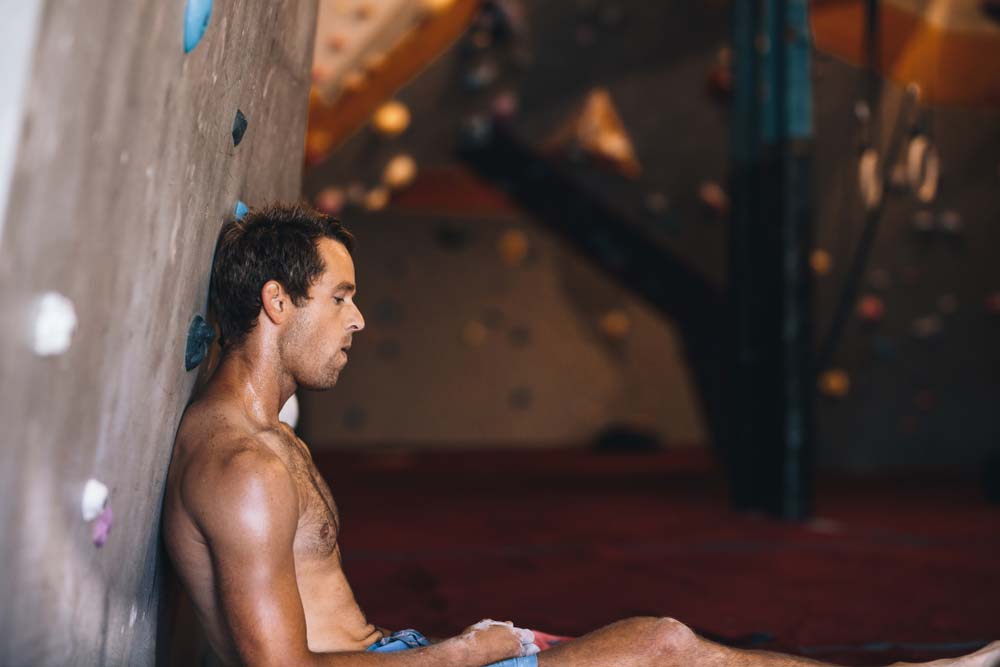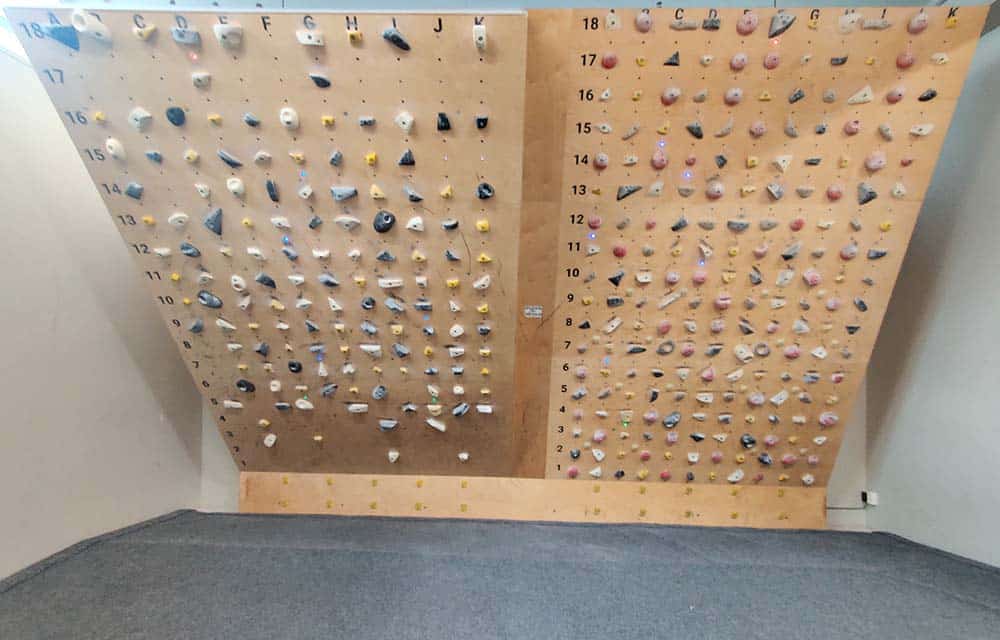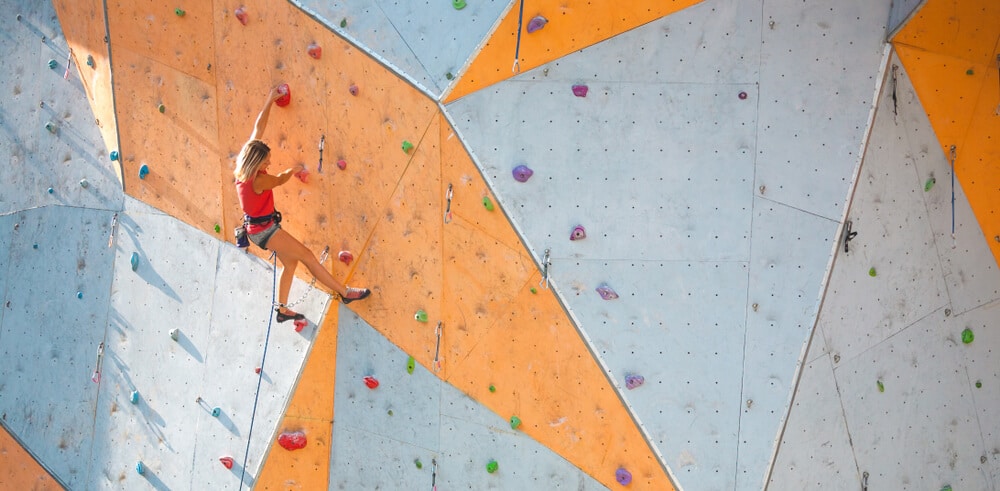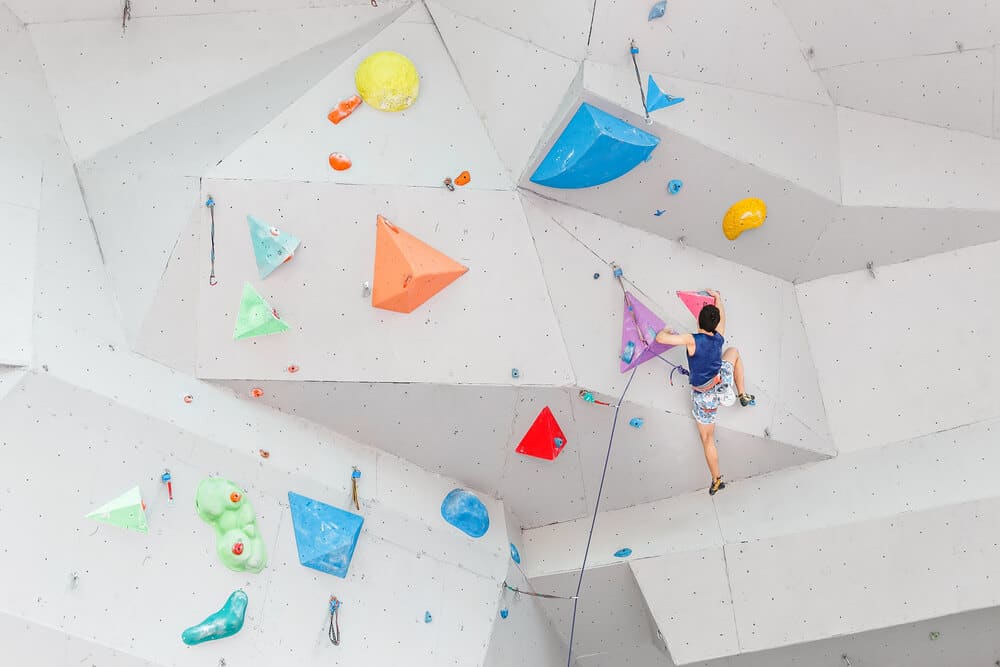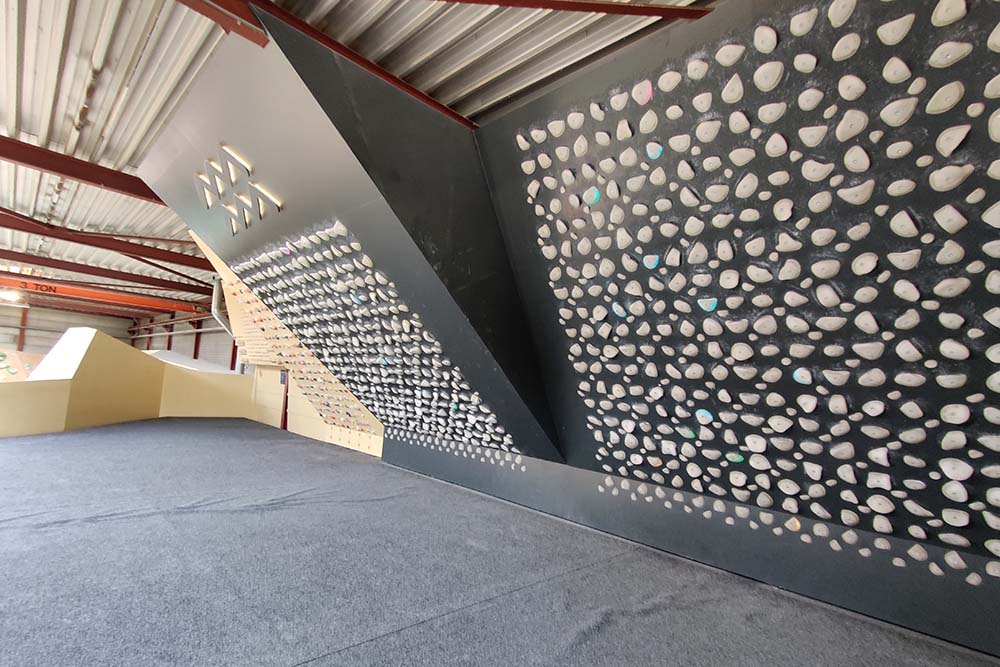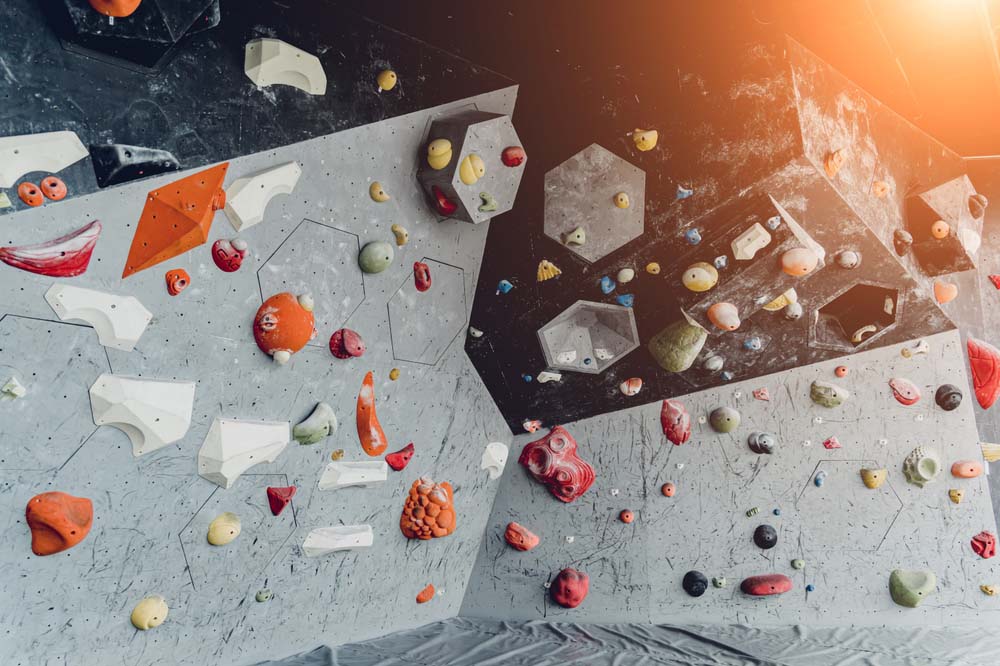When you first get started with rock climbing, your progression is striking. You get stronger, try harder, and notice positive changes in your body and climbing technique. It’s precisely the rapid progression that sucks you in and allows you to catch “the bug” or fall down “the rabbit hole” of climbing.
However, eventually, your progression comes to a head. Over time, you notice you aren’t progressing through the grades as quickly. And sometimes, you get stuck climbing the same grade for months or years at a time– this is a training plateau.
And what’s the solution for progressing past your plateau? Rock climbing training programs.
Keep reading to learn about climbing training programs so the next time you get stuck on a plateau, you can effectively get back to improving without losing too much time.
What is a Training “Plateau” in Climbing?
Training plateaus are long periods where your climbing progression stagnates. Typically, they are the result of your training plan (or lack thereof) no longer being viable for your climbing.
Depending on the person and their specific scenario, plateaus can last anywhere from a few weeks to multiple years. Training plateaus last as long as it takes for you to notice your stagnation, devise a training plan, and execute the plan to push past the plateau.
The Building Blocks of Climbing Training Programs
Rock climbing training programs are about as common as seashells on the beach. Your options are limitless; each program is a little bit different, and the program you follow depends on variables unique to the individual.
So, instead of attempting to add another seashell to the metaphorical sea, I’ll talk about the vital building blocks of training programs to devise a program that helps you push past your specific plateau.
Set a Training Goal
Everything starts with a goal. For example, you probably had a goal when you started climbing. Something like, “climb twice a week,” or “be able to boulder v3.” But now that you’ve accomplished those goals and are stuck on a plateau, it’s time for a new training goal.
Your training goal should be S.M.A.R.T.– specific, measurable, relevant, and time-bound.
Define a Training Timeline
Training for an ambiguous amount of time is a good way to extend your training plateau. Instead, you should commit to training for a pre-determined period so you can keep track and stay motivated.
You can determine your timeline based on a climbing trip you have planned in the future. Or you can use more traditional timelines, like three, six, or 12 months.
Develop a Periodized Program Within Your Timeline
All good training plans have a well-established time frame. Then, within the larger time frame are specific training blocks or periods that target specific phases and last for pre-determined times.
The process of breaking your longer timeline into chunks is called periodization. Designing which phases your training plan incorporates and how long you train each phase will be determined by your original training goal and larger timeline.
Monitor Your Progress
A vital component of a well-made training program is not only the self-obedience to do “the thing” but also the commitment to monitoring or measuring “the thing.”
In other words, it’s not enough to only follow your program. You also need to be tracking your efforts and recording your training statistics.
By monitoring your progress day by day or week by week, you can see first-hand when you make improvements– that is incredibly motivating and critical for longevity.
You can also see when things aren’t going well in your training. When that happens, you can be alerted to make adjustments.
Prepare to Make Adjustments
Climbing training programs are imperfect, dynamic things. In other words, the climbing training program you devised at the beginning will not look like the training program you finished with.
That’s because adjustments are inevitable.
For example, you might need to adjust your training plan to incorporate an additional rest day if you struggle to recover between training days. Or you might need to switch out the resistance band or body weight exercises you’ve been using for your antagonist muscle training as your general conditioning improves.
Consistently Execute Your Training Plan
When it comes to training for rock climbing, consistency is everything. The success of your program and the completion of your climbing goals will depend on whether you can follow your training schedule.
The. bulk of one’s ability to train consistently boils down to their self-obedience. If you struggle to hold yourself accountable for following exercises, try training with a friend or hiring a climbing performance coach.
However, many climbers struggle to consistently train week in and week out because their training schedule is too hard. When your schedule is too hard, you overtrain, become fatigued, and struggle to recover, all of which negatively impact your motivation to continue.
So, when it comes to setting that original S.M.A.R.T. climbing goal, really make sure you design a program you can attain.
The Phases of a Rock Climbing Training Program
Training programs can target different phases of rock climbing.
For example, if you want to improve your sport climbing redpoint grade, then a training plan that targets power endurance training could be helpful. If you want to send a short, powerful bouldering project, you might need a training program that focuses on power.
Or, if you want to work on a little of everything, a plan that incorporates all the phases could help you reach your goals. However, I would be careful not to design a program that is too broad.
Long Endurance
Endurance in climbing can be trained with long-duration exercises and low intensity. You should never come close to failure when training endurance. Think 50%-75% effort. Instead, you want to push your body to work hard but then give it the opportunity to rest and recover quickly.
How to Train Long Endurance
-
Traversing terrain
-
Climbing and downclimbing auto-belays
-
Interval climbing– for example, 5 minutes of climbing and then 5 minutes of resting for six sets
Power
Power is the ability to squeeze really hard and hold onto the rock. It’s essential for climbing, and the more upper body power you have, the better. To train power, you want to focus on high-intensity and low-volume exercises that elicit 80%-90% effort.
How to Train Power
-
Max hangs on the fingerboard
-
Campus boarding
Power Endurance
To train power endurance, you want to focus on high-intensity workouts that stack powerful exercises but don’t make you fail. You want mid-volume, and the intensity should be high, aiming for 75% to 80% effort.
How to Train Power Endurance
-
Short sport routes
-
Long boulder problems
-
4 x 4 bouldering workouts
Peak Performance
Peak performance is all about maximum strength. To train maximum strength your protocol should include brief exercises of 5 to 10 seconds with 3 to 5 reps at 95% effort. In between sets, you should aim to recover completely by resting at least three minutes.
How to Train Peak Performance
-
Weighted pull-ups
-
Fingerboard hangs on small holds
-
One-arm lock-offs and pull-ups
-
Limit bouldering
7 Common Training Program Mistakes
Training programs are imperfect, and so are rock climbers. Throughout your climbing training career, you will inevitably make mistakes. Here are seven common training mistakes climbers make all the time, including myself.
If you can avoid these mistakes, you’ll notice that your training plateaus less frequently and when it does, you’ll be able to get back to progressing more quickly.
-
Forgetting About Diet and Nutrition: you train really hard via a perfectly devised training plan, but if you fail to eat healthy, hydrate, and sleep a lot, you’ll notice fewer gains and have a harder time recovering.
-
Using Someone Else’s Training Programs: seeking inspiration from other climbers at the climbing gym is perfectly normal, but you should not copycat their training program exactly. That’s because what your body needs to improve is unique from everyone else.
-
Not Having a Climbing Training Program: sometimes, climbing purely for the fun of it is exactly what you need. But if you are getting frustrated by a training plateau, you cannot expect to improve without changing something, whether it be more strength training or finger strength exercises.
-
Overtraining: one of the key components to training for climbing and injury prevention is rest. If you don’t include rest days into your weekly schedule and overtrain instead, you will notice fewer gains and expose your body to injury.
-
Training Strengths and Not Weaknesses: your workouts should cater to the things you are bad at in climbing, not what you are good at. For example, if you cannot send your redpoint project due to a lack of power endurance in the crux, you might need to include a maximum strength phase in your indoor training or additional upper body strength exercises in your conditioning.
-
Cramming: it’s natural to want to train really hard before a climbing trip or competition. However, you’ll actually be better off by relying on low-intensity training before your event and a couple of solid rest days instead.
-
Over-Competing With Yourself: remember– rock climbing is supposed to be fun. if you find yourself struggling to enjoy your hobby while in the climbing gym or at the crag outside because you’re struggling to perform, you might need to reassess your motivations for climbing.
A Climbing Training Program Could Be Your Key to Success
If your climbing progression has plateaued, it may be time to mix things up with your training and try something new. A training program that targets weaknesses in your climbing could make the difference and allow you to send the next V-grade in the gym or send your outside project.
When designing a workout to boost specific climbing skills, improve your bouldering ability, or enhance your general endurance or finger strength, remember to make it specific to you, follow your climbing goals, and be consistent.


